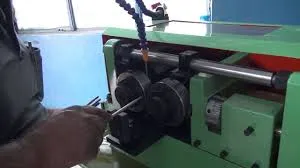
-
 Afrikaans
Afrikaans -
 Albanian
Albanian -
 Amharic
Amharic -
 Arabic
Arabic -
 Armenian
Armenian -
 Azerbaijani
Azerbaijani -
 Basque
Basque -
 Belarusian
Belarusian -
 Bengali
Bengali -
 Bosnian
Bosnian -
 Bulgarian
Bulgarian -
 Catalan
Catalan -
 Cebuano
Cebuano -
 Corsican
Corsican -
 Croatian
Croatian -
 Czech
Czech -
 Danish
Danish -
 Dutch
Dutch -
 English
English -
 Esperanto
Esperanto -
 Estonian
Estonian -
 Finnish
Finnish -
 French
French -
 Frisian
Frisian -
 Galician
Galician -
 Georgian
Georgian -
 German
German -
 Greek
Greek -
 Gujarati
Gujarati -
 Haitian Creole
Haitian Creole -
 hausa
hausa -
 hawaiian
hawaiian -
 Hebrew
Hebrew -
 Hindi
Hindi -
 Miao
Miao -
 Hungarian
Hungarian -
 Icelandic
Icelandic -
 igbo
igbo -
 Indonesian
Indonesian -
 irish
irish -
 Italian
Italian -
 Japanese
Japanese -
 Javanese
Javanese -
 Kannada
Kannada -
 kazakh
kazakh -
 Khmer
Khmer -
 Rwandese
Rwandese -
 Korean
Korean -
 Kurdish
Kurdish -
 Kyrgyz
Kyrgyz -
 Lao
Lao -
 Latin
Latin -
 Latvian
Latvian -
 Lithuanian
Lithuanian -
 Luxembourgish
Luxembourgish -
 Macedonian
Macedonian -
 Malgashi
Malgashi -
 Malay
Malay -
 Malayalam
Malayalam -
 Maltese
Maltese -
 Maori
Maori -
 Marathi
Marathi -
 Mongolian
Mongolian -
 Myanmar
Myanmar -
 Nepali
Nepali -
 Norwegian
Norwegian -
 Norwegian
Norwegian -
 Occitan
Occitan -
 Pashto
Pashto -
 Persian
Persian -
 Polish
Polish -
 Portuguese
Portuguese -
 Punjabi
Punjabi -
 Romanian
Romanian -
 Russian
Russian -
 Samoan
Samoan -
 Scottish Gaelic
Scottish Gaelic -
 Serbian
Serbian -
 Sesotho
Sesotho -
 Shona
Shona -
 Sindhi
Sindhi -
 Sinhala
Sinhala -
 Slovak
Slovak -
 Slovenian
Slovenian -
 Somali
Somali -
 Spanish
Spanish -
 Sundanese
Sundanese -
 Swahili
Swahili -
 Swedish
Swedish -
 Tagalog
Tagalog -
 Tajik
Tajik -
 Tamil
Tamil -
 Tatar
Tatar -
 Telugu
Telugu -
 Thai
Thai -
 Turkish
Turkish -
 Turkmen
Turkmen -
 Ukrainian
Ukrainian -
 Urdu
Urdu -
 Uighur
Uighur -
 Uzbek
Uzbek -
 Vietnamese
Vietnamese -
 Welsh
Welsh -
 Bantu
Bantu -
 Yiddish
Yiddish -
 Yoruba
Yoruba -
 Zulu
Zulu
Understanding the Operational Mechanism of ODM Thread Rolling Machines in Manufacturing Processes
The Working Principle of ODM Thread Rolling Machines
In the precision manufacturing industry, thread rolling machines play a crucial role in producing high-quality threaded fasteners. Among the various types of these machines, the ODM (Out-Diameter Method) thread rolling machine stands out for its efficiency and the quality of the threads it produces. Understanding the working principle of ODM thread rolling machines not only sheds light on their operational mechanics but also highlights the advantages they offer in production.
What Is Thread Rolling?
Thread rolling is a cold forming process that transforms a cylindrical blank into a threaded workpiece without removing any material. This technique differs significantly from traditional machining methods, such as cutting or grinding, where material is removed to create threads. Instead, roller dies compress the material under high pressure, causing the metal to flow into the desired thread shape. This process enhances the material's mechanical properties, resulting in stronger, denser threads with improved surface integrity.
Overview of the ODM Thread Rolling Machine
The ODM thread rolling machine, specifically designed for rolling external threads, utilizes a set of cylindrical rollers that rotate in opposition. These rollers are engraved with the desired thread profile. When the unthreaded workpiece is fed between the rollers, it is squeezed under immense pressure as the rollers rotate, forming the thread.
Components and Operation
An ODM thread rolling machine consists of several key components, including the frame, roller dies, hydraulic system, feeding mechanism, and control panel
. The machine is typically constructed from robust materials to withstand the high pressures involved.1. Feeding Mechanism The workpiece is loaded into the machine via a feeding mechanism, which often incorporates sensors to ensure accurate positioning. This can be an automatic or manual process, depending on the specific machine design.
odm thread rolling machine working

2. Roller Dies The heart of the threading operation, these die rollers are engineered with precision to create the exact thread profile required. The design of the dies plays a significant role in determining the quality of the threads produced.
3. Hydraulic System The hydraulic system applies the necessary pressure to ensure that the rollers maintain contact with the workpiece throughout the rolling process. This system can adjust the force based on the material type and thickness.
4. Control Panel Modern ODM thread rolling machines come equipped with digital control panels. Operators can adjust the machine settings, monitor production parameters, and ensure consistent output quality.
Advantages of ODM Thread Rolling Machines
The use of ODM thread rolling machines offers several advantages
- Enhanced Strength The cold forming process increases the strength of the threads, as the material's grain structure is altered positively. - High Precision and Quality ODM machines can produce threads with tight tolerances and superior surface finishes, which are often required in critical applications. - Material Efficiency As little to no material is removed during the process, there is minimal waste, making it a cost-effective choice in mass production.
- Versatility ODM machines can handle various materials, including steel, aluminum, and brass, making them suitable for diverse industrial applications.
Conclusion
In summary, the ODM thread rolling machine is a vital tool in the manufacturing of threaded components. Its ability to create high-quality threads efficiently and with minimal material waste makes it a preferred choice in industries ranging from automotive to aerospace. As technology evolves, these machines will continue to play a significant role in the advancement of manufacturing processes, particularly in creating durable and reliable fasteners essential for modern engineering.
